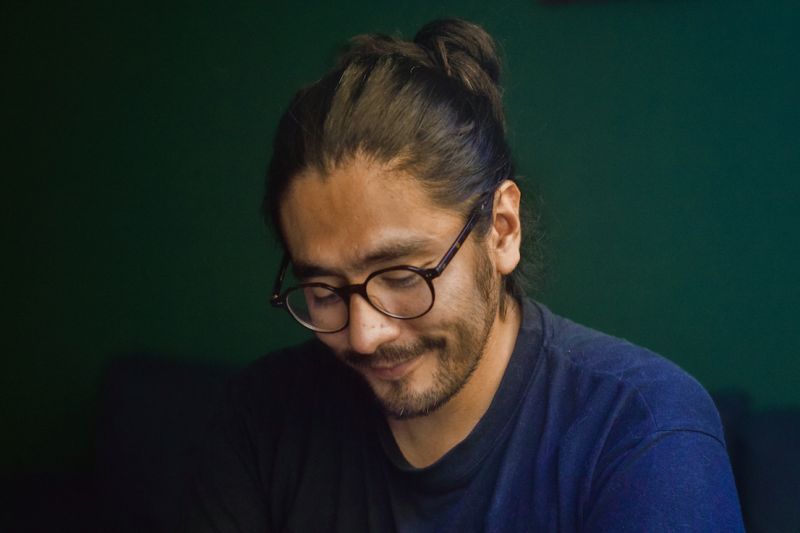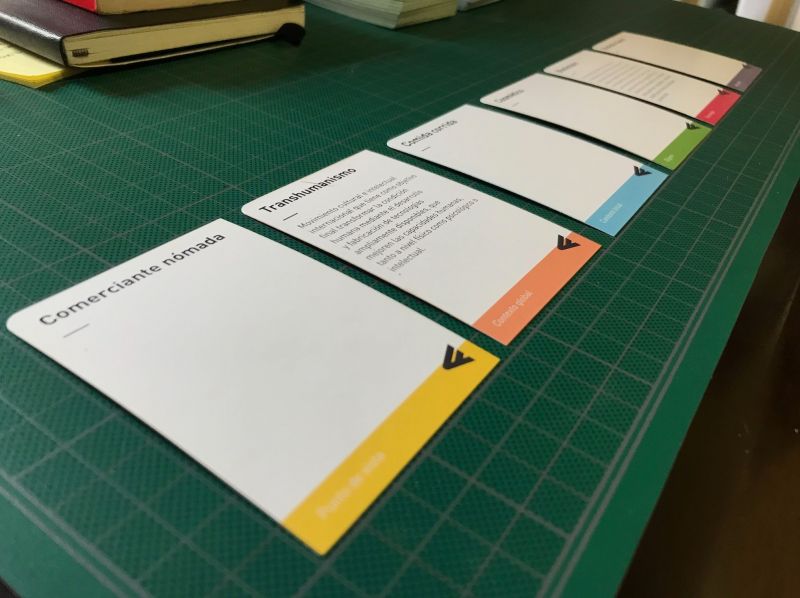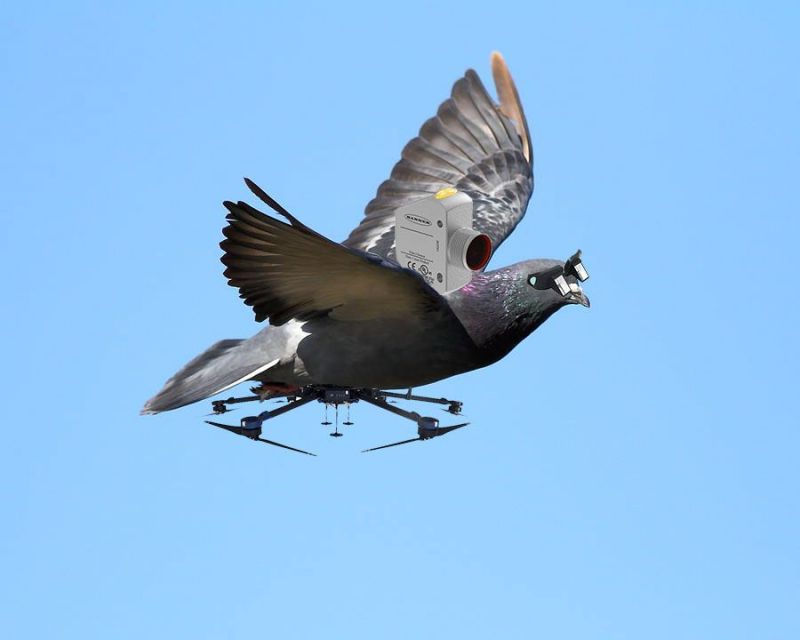
Israel Viadest is an artist and media designer. Currently, his practice focuses on the discursive dimension of the intersections between design, art and technology, as tools for analysis, discussion, creation and updating of futures, through critical design, fiction and speculation. He is also a partner at The Near Future Laboratory (California, Gijón, Geneva, Mexico). His work has been exhibited in Mexico, France, Switzerland, Italy and Germany.
Q: How did your project, “Vestigia Futura”, start and evolve?
When I came back to Mexico after working on design fiction in Spain and Switzerland, I wanted to explore how we can enable new ways of discussing our collective futures through objects, through design. I wanted to create a space for collaboration, a space where many different people could come and work on their fears or expectations about the future, and produce something tangible in the process.
The topic was the future of Mexico, which is of course too broad. When I started the project, I had this map of all the things I wanted to explore. But I also wanted it to be something that revealed itself through the project, through the meetings with people: How do people think about the future in Mexico? Is it utopian or dystopian, does it resemble the present? What topics are important?
We had only one in-person workshop before the pandemic. It lasted 12 hours and it was fun, but then we had to move the workshops online, which was fine, but not quite the same.
Q: Can you take us through the experience of one of these workshops?
I took inspiration from The Near Future Laboratory’s Design Fiction Work-kit and made this deck of cards in which we can have different combinations of Context (local and global), Technology, Objects, Point of view (of someone living in the future), and Archetype (which is the thing that the teams will eventually have to produce: a newspaper article, an ad, a brochure, something simple but that can encapsulate the whole scenario…). It’s an ever-expanding deck. Each time I have a workshop, people suggest additions.
The card game is a great way to get the teams going. People will work in teams of three or four. Let’s say you’re in a team, each of you draws one card and you combine them to create a common scenario. First you draw the Archetype card, so you know what you’ll be producing, say a press release. Then another player pulls a global context card, like “Fully automated luxury communism”, and the team starts figuring out how that may work. Then you pick a Point of view, say we draw a teacher, what does a teacher do in such a world where we may not need to work? And so on. The group can pick their cards randomly, or sometimes choose the ones it wants to include in its story.
After drawing their cards, the team has templates to work on and draft ideas of what their story, and the object they’ll be creating, will be. They also have the space to describe the timeline, the sequence of events that made that future happen. At the end, once they have everything, they have to write a narrative about that future. We also ask them to specify where their future falls on the spectrum between utopian and dystopian.
Since the groups are often random, normally there’s a lot of friction on what things mean, on what’s good or bad. I like it when there’s conversations and negotiations on what the future means for everybody.
Initially, the process lasted for two days. Online, it’s often shorter: two three-hour sessions. With an architecture class, it was four days, once a week for a whole month.
By the end of day one, each team has chosen their cards, they have a notion of what their future will be, and how they will produce their artefact. So I gather them up and ask them to share the first approach of their project. There’s a discussion on what that means for everybody. The most constructive is when other participants share references, add ideas to the other teams’ scenarios. Then, by the end of day two, each team tells their stories and shows their artifacts, and we have a discussion.

Q: Who runs the project, and how is it funded?
I run the project. There is no specific funding, aside from the request for some workshops by organizations or institutions.
Q: When and where does it take place?
Today, mostly online. But we also want to go back to physical experiences and make them more immersive.
Q: What publics do you work with, why, and what do they do together?
So far I built the groups by invitation. I initially focused on the creative types, like designers, artists, writers. I also invited anthropologists, sociologists, and scientists. I try to open it to as many different backgrounds as possible.
In September, I’ll be hosting a workshop for Ambulante, a network dedicated to documentaries as a tool for social and cultural transformation. The topics will be territories, climate change, and the future; the participants will be NGOs working on the defense of water or earth, indigenous communities, etc.
Q: In what ways do you work with arts, fiction and narratives?
For people, or groups, that are not used to working with designers, I think it opens another way to tell the things they see in their everyday work, the things they understand better than people that are not into their discipline. It gives them another tool to share their stories.
And there’s the power of narratives. The object that the groups produce could be intriguing, eye-catching, weird, but it’s only a hook, and then there’s this whole story behind it. There’s a lot of power in the way we understand the world through narratives.
I also do more traditional foresight, but Vestigia Futura is more like an art project. There’s more freedom to explore and to propose; there’s this richness of diversity; there’s an invitation to discuss, to confront your worldview with someone that may have a very different one. You don’t have to be aligned, whereas when you work for a company, you want participants to be aligned in order to make things work.

Q: What change(s) would you like the project to produce for the participants?
In an ideal world, it would instigate change. It would push us to understand first our differences, and then to work collaboratively towards something that we build. I’d love Vestigia Futura to reveal that you have agency towards what happens around you. There’s a lot of factors involved in the way we live, but we still have agency. While a lot of people I’ve seen feel that they don’t.
Q: How do you know you have succeeded? Do you have evaluation methods?
I don’t have a way of analyzing that. I wanted to have a critical mass of projects to start analyzing this data. Obviously though, if I see a project that jumps from fiction to action, I would say that’s a good indicator.
I created a virtual version of the whole process so that people could be more autonomous. I also had a couple of people messaging me about how they made the exercise with their students and were able to publish their scenarios themselves.
Project name
Vestigia Futura
Description
Speculative design to imagine the futures of Mexico.
Vestigia Futura intends to materialize – physically and digitally – glimpses of possible futures of Mexico. The material it integrates works as materialized critiques of the consequences or contemporary problems, and as provocations triggering discussions. The aim is to facilitate the creation of new imaginaries that question our vision of the present and the future.
During these workshops, participants embark into a collective inquiry on the possible futures of Mexico, using methods of speculative design and narration.
Website
vestigiafutura.io
Interview conducted by Daniel Kaplan
